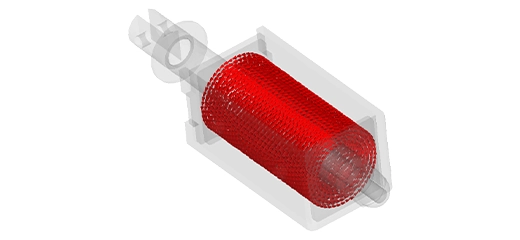For many years, conventional satellites were the only option for the space industry. Satellites consume high power, cost millions of dollars, and take several years to manufacture. Hence, they have been always fabricated by large companies and government organizations. In contrast, Cube Satellites (CubeSats) have gained popularity over the last few years as they are lightweight and can be built using commercial off-the-shelf components. Therefore, they became accessible to the public and provided a cost-effective alternative for space missions. Just like any satellite, CubeSats consist of an antenna and radio communication system. The main function of the radio subsystem is to ensure reliable communication between CubeSats and the ground station. The antenna is a key component of the communication system. It is used to send and receive information to and from the ground station. Designing such an antenna is challenging as it needs to meet several restrictions related to the CubeSat’s size, weight, and power while providing high antenna performance.
HFWorks Modeling of CubeSat System
To contribute to this research effort, we used our electromagnetic virtual prototyping software, HFWorks, to design a high-gain antenna that meets the CubeSat specifications such as size and weight. The design of the antenna was obtained from the journal paper [1].
Printed Yagi Antenna
The proposed printed Yagi antenna has a total dimension of 100 mm × 98 mm, which is smaller than the CubeSat surface.
Printed Yagi Antenna
The above antenna is simulated, and the following results are obtained
Electric Field Animation (2.35 GHz)
Return Loss of the Yagi Antenna
3D Radiation Pattern
Antenna Far-Field Parameters (2.35 GHz)
The antenna resonates at 2.35 GHz and has a gain of 3dB (2.35 GHz).
Antenna on CubeSat
CubeSat requires high-gain antennas. To increase the gain of the antenna, the number of yagi elements must be increased. This is not possible as the antenna can not exceed the predefined CubeSat dimensions. One way to enhance the antenna performance is by placing the antenna at an angle from the top surface of the CubeSat. The antenna with different lift angles is shown below:
Antenna on a CubeSat (90°)
Antenna on a CubeSat (50°)
Antenna on a CubeSat (10°)
The above antennas are simulated, and the following results are obtained
Return Loss of the Yagi Antenna at Three Different Lift Angles
2D Radiation Pattern (φ= 0°) at Three Different Lift Angles
Electric Field Animation (2.35 GHz)
3D Radiation Pattern (90°)
3D Radiation Pattern (50°)
3D Radiation Pattern (10°)
From the above figures, we can notice that by decreasing the lift angle from 90° to 10°, the forward gain increases from 5.5 dB to 8.1 dB . As the antenna gets closer to the CubeSat top surface, the interaction between the antenna and CubeSat becomes higher and this leads to the improvement of the forward gain. Moreover, the resonant frequency gets shifted more as the coupling between the antenna and the CubeSat becomes stronger.
In conclusion, CubeSats offer a cost-effective and accessible solution for space missions, but they present unique challenges in antenna design due to size, weight, and power constraints. By leveraging HFWorks, a high-gain, lightweight printed Yagi antenna was designed to meet CubeSat specifications, enhancing communication capabilities. Adjusting the lift angle between the antenna and the CubeSat effectively increases the forward gain, showcasing HFWorks' capability in optimizing CubeSat antenna performance for reliable space communications.
References
[1] S. Liu, R. Raad, P. L. Theoharis, F.E. Tubbal, 2020, “ A Printed Yagi Antenna for CubeSat with Multi-Frequency Tilt Operation”



